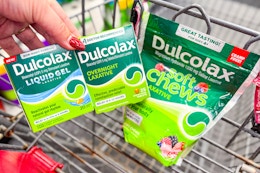Grocery taxes have become a controversial issue, as families in some states are faced with paying a tax on groceries on top of already high food prices. In response, a few states have reduced or even eliminated their tax on groceries altogether. Like Kansas, who is dropping their tax on food from 4% to 2% on January 1, 2024.
Just thirteen U.S. states currently have a grocery tax, and of those states, the amount of the tax varies from a low of 0.125% (in Arkansas) to a high of 7% (in Mississippi). In some states, the tax rate is the same as the general sales tax rate, while in others, it’s a separate, lower rate specifically for groceries.
There have been calls to eliminate the tax on groceries to make the tax code fairer and help families afford food — which would be a nice boost on top of the child tax credit payments. However, there are a lot of questions surrounding the effects of eliminating the tax.
Here’s who’s considering eliminating this tax and what’s swirling around regarding this possible change. And if you’re interested in saving money on groceries (tax or no tax), we’ve got you covered with The Krazy Coupon Lady app.
For more smart shopping tips and savings hacks, text HACKS to 57299.
There are currently 13 states who charge a tax on groceries.

Although most of the U.S. population lives in the 37 states without a grocery sales tax, there are currently 13 states that do have one.
In The Krazy Coupon Lady’s home state of Idaho, we pay a 6% sales tax on everything — even groceries. But some states have a lower tax rate for groceries than other items.

Six states have passed laws to reduce the grocery tax — and more are considering total repeals.
To address rising inflation and other economic pressures, six of the 13 states with a grocery sales tax have made moves to reduce the tax as of late. Here’s a brief overview of what each state has done.
Alabama lowered their tax on groceries from 4% to 3% on Sept. 1, 2023.
But the transition wasn’t exactly a smooth one. On the day of the switch, Walmart accidentally overcharged customers in Alabama due to technical difficulties, prompting them to hand out $5 gift cards as an apology.
The state of Alabama also has plans to drop the tax another percentage point (down to 2%) by Sept. 1, 2024.
Idaho gave a 17% – 20% boost to the grocery tax credit in 2023.
The state increased the annual state tax credit for groceries from $100 to $120 for people under 65 and from $120 to $140 for people 65 and older.
Illinois tried out a 0% tax on groceries from July 1, 2022, to June 30, 2023.
The state paused the 1% Illinois grocery tax for a year, but that’s finished now. The Illinois grocery tax pause started on July 1, 2022, and ended on June 30, 2023.
Kansas reduced their tax on groceries from 4% to 2% on Jan. 1, 2024.
Governor Laura Kelly signed a bill in 2021 to phase out the original 6.5% grocery tax in stages, with the goal of completely eliminating the Kansas grocery tax by Jan. 1, 2025.
On Jan. 1, 2023, the food tax was reduced from 6.5% to 4%. And starting on Jan. 1, 2024, it dropped to 2%.
Tennessee tested out a 0% grocery tax from Aug. 1 – Oct. 31, 2023.
The state reduced its grocery sales tax from 5% to 4% in 2017 and lifted the tax for a month in August 2021. But Governor Bill Lee announced a three-month grocery sales tax suspension from Aug. 1 – Oct. 31, 2023, when the Tennessee grocery tax went to 0%.
Virginia’s grocery tax went from 1.5% to 1% on Jan. 1, 2023.
The state passed a law in 2022 to reduce the 1.5% state tax on groceries and certain essential items, such as diapers and feminine hygiene products. As of Jan. 1, 2023, the Virginia grocery tax on these items is 1%.
Related: Deals on Tax Day That’ll Get You Free Food & Discounts
There’s a lot of debate over the pros and cons of eliminating the grocery tax.

Reducing or eliminating the grocery sales tax would have a budgetary impact on most families, but beyond that, there’s a lot of debate. For one, some people say it would make the tax code fairer, while others say the loss of tax revenue would put public services like education, health care, and transportation at risk.
And then there’s the question of who’d be helped most by the tax reduction. Some argue that low-income families would benefit the most, as they spend a larger share of their income on food. But others say that the middle class benefits most from the tax exemption because low-income families are already exempt from the tax on groceries when they use SNAP food benefits.
There’s also a lot of debate about which foods should be exempt from the tax. And some states are having trouble keeping things consistent. Take New York for instance: cookies are tax-free, but candy isn’t.
Download the KCL app to add and redeem coupons in store














































































